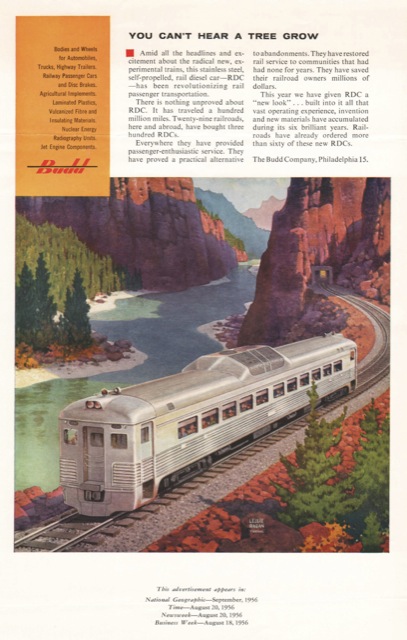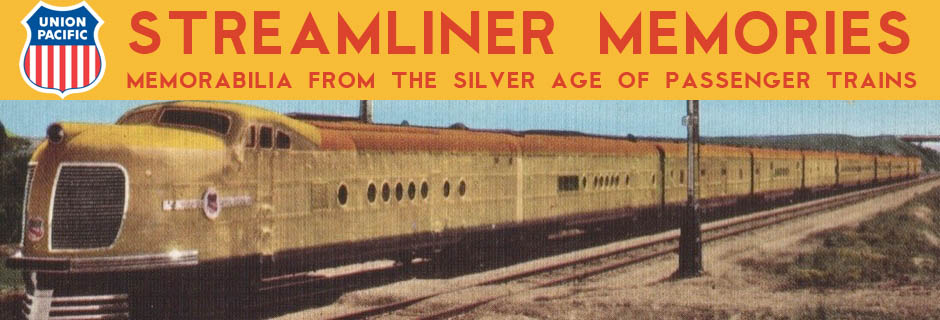I’ve already shown this ad from my collection of National Geographics once, but this mailer came with my new look RDC brochure, so I’m presenting it again. The mailer says the ad was featured in August, 1956, issues of Time, Newsweek, and Business Week as well as the September National Geographic.

Click image to download a 954-KB PDF of this mailer.
I still don’t understand just what Budd is getting at with that headline. Nothing in the text mentions trees growing. It does mention the RDC’s new look, though it doesn’t specifically say what that new look is and only someone intimately familiar with previous RDCs would be likely to spot the differences from the illustration.
The RDC in the picture definitely has the new style, and the picture is strongly reminiscent of the Feather River Canyon. But the Western Pacific’s only two RDCs were delivered in 1950 and thus were of the old look variety, which explains why painter Leslie Ragan didn’t put the Western Pacific’s name on the car.

That is a pretty weird headline. I suspect, given the text, that the meaning was “you can’t hear a tree grow because of the noise of all the new fangled train types” out in 1956. I imagine this was aimed at GM for the Train of Tomorrow and Talgo, among others.
The “new look” RDC of 1956 major change was what the public didn’t see – a 300 hp engine instead of the original 275. The model number never changed from the original RDC-1, which also seems odd. The only exterior differences as I understand it were smaller end windows and the stainless steel fluting now curling around the ends of he cars instead of ending on the sides. The standard headlight was higher on the roof, enclosed by sort of a hump, but not all railroads went with that change so it’s not a reliable spotting feature. The easiest way to distinguish between the original and “new look” was to look at where the fluting ended on a car.
Jim